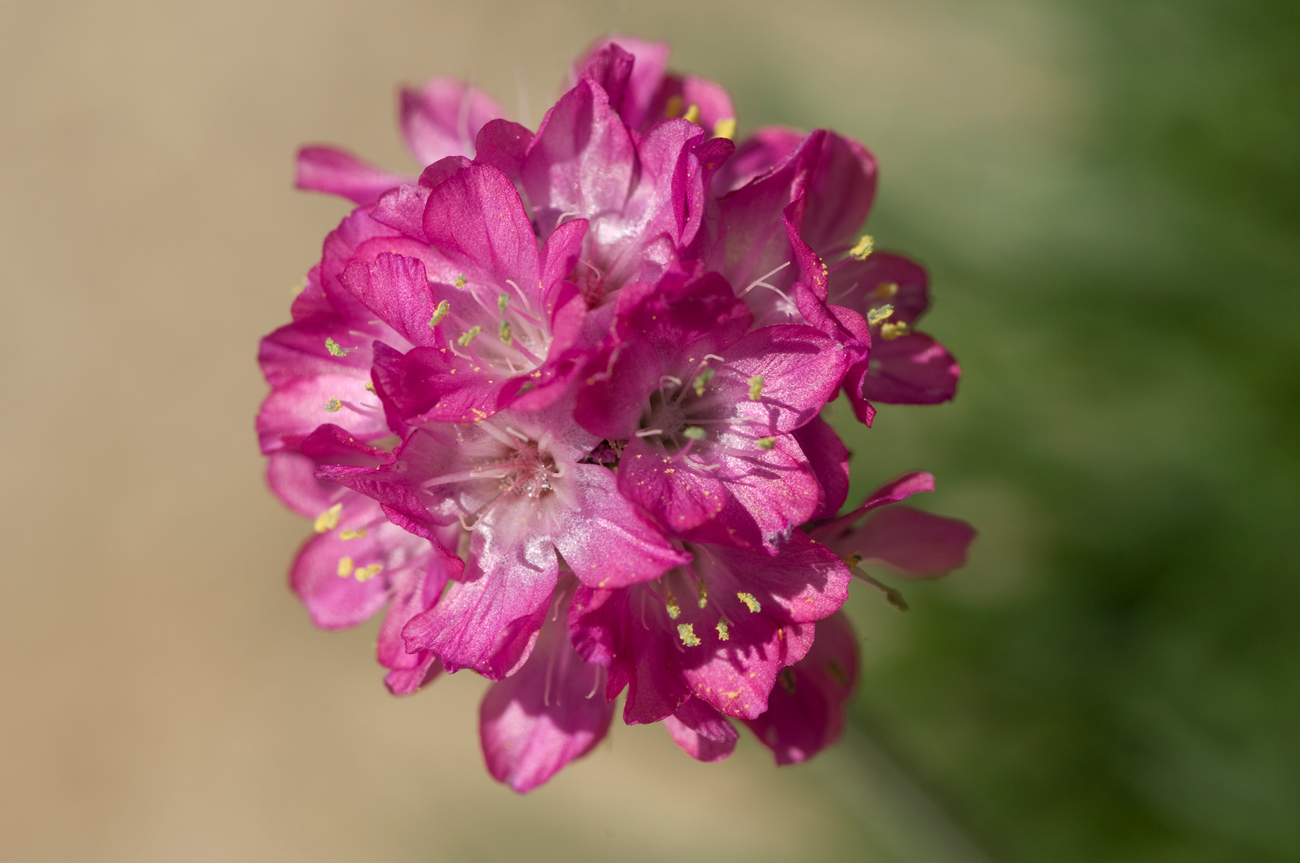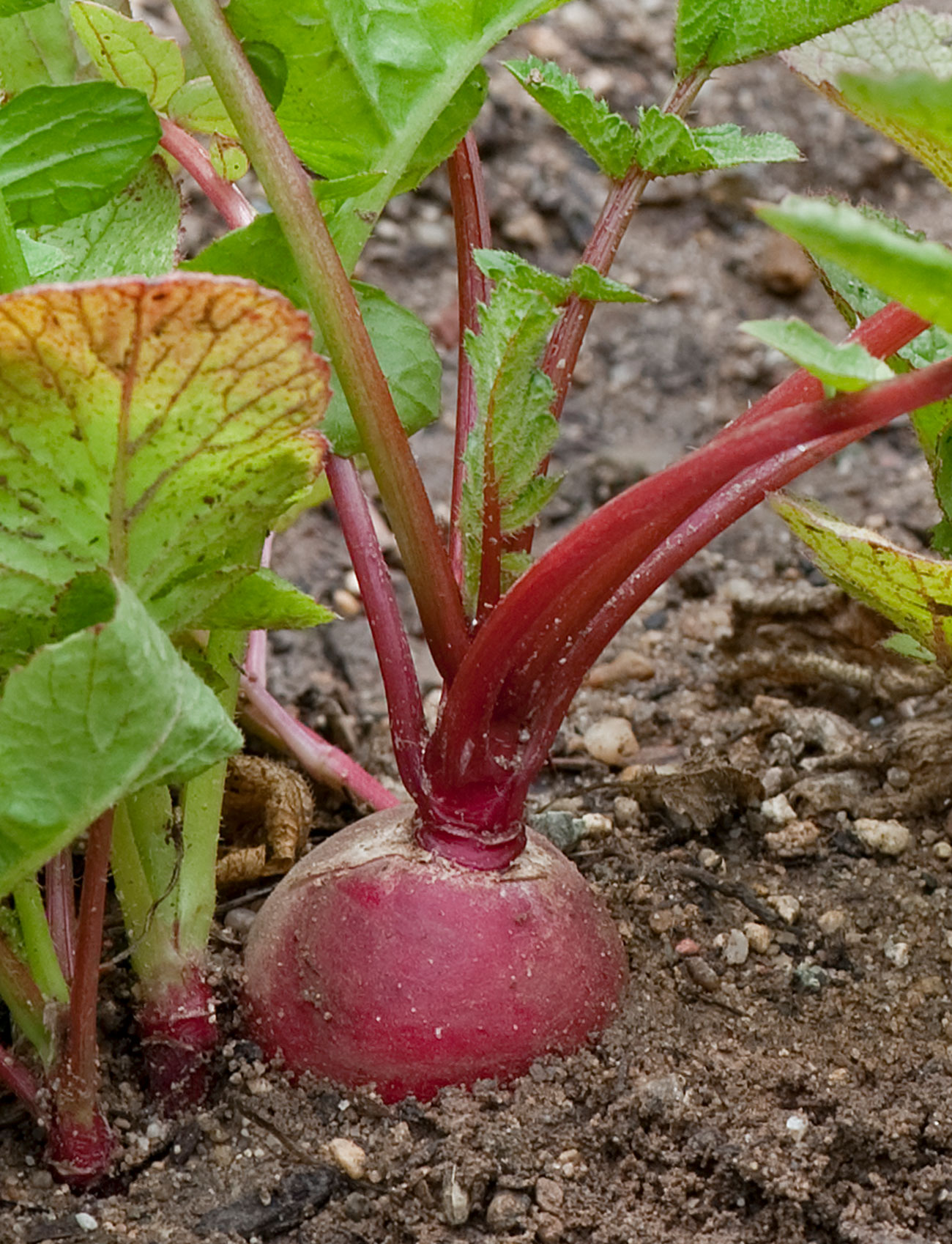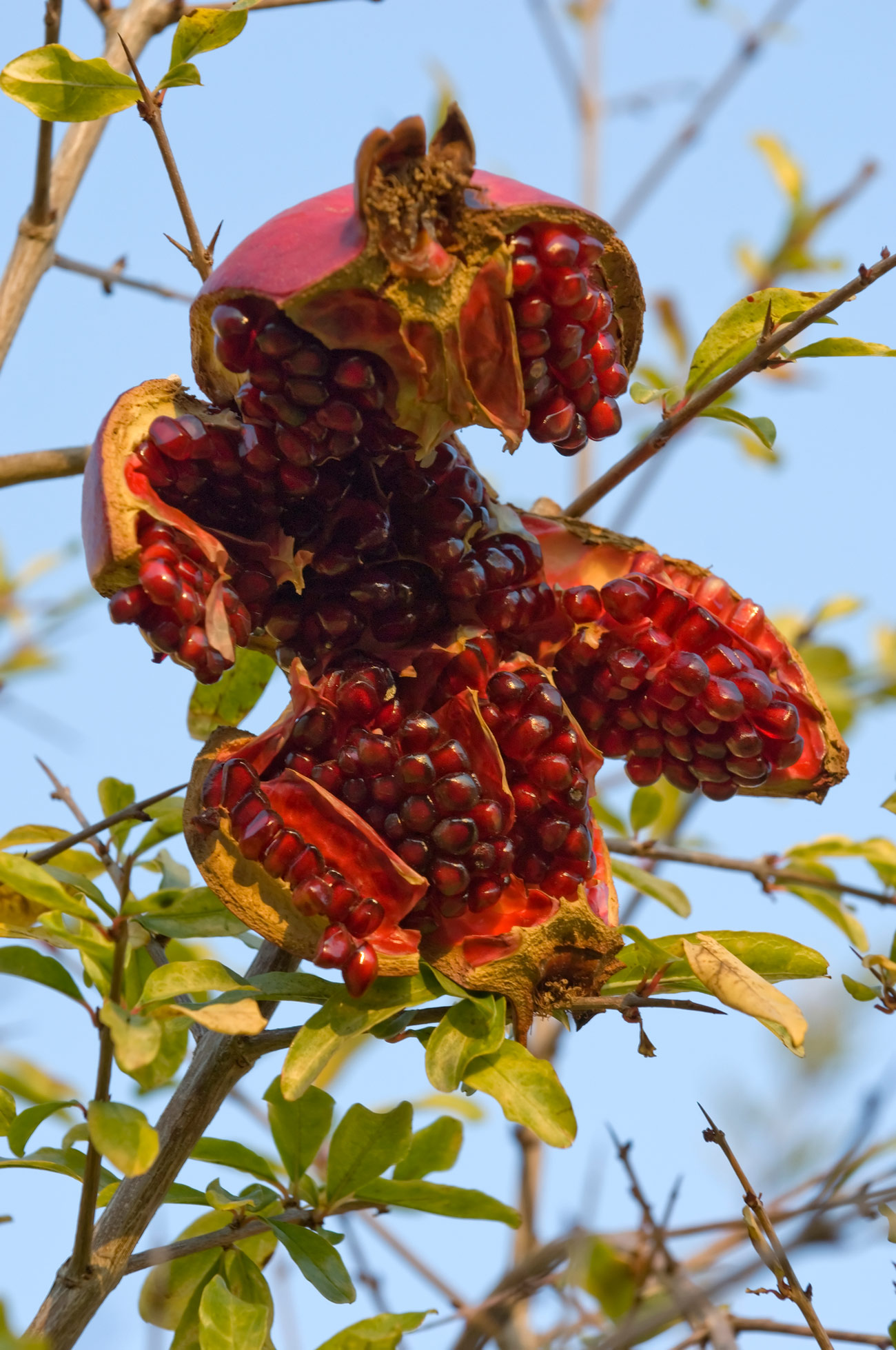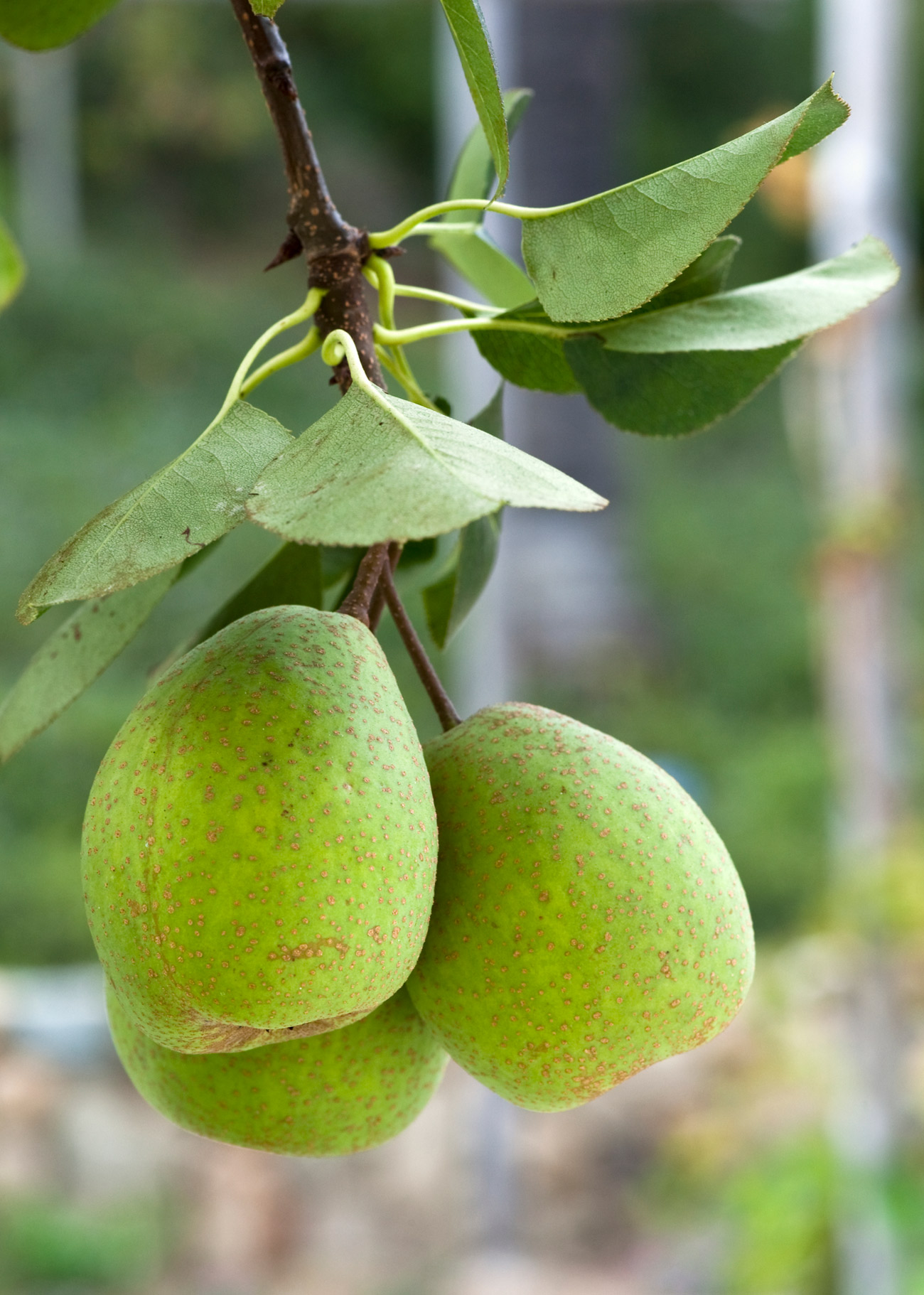
The Herb Garden at the Getty Villa is a favorite among visitors not only for its aesthetic appeal, but also for the variety of scents from the lavender, sage, spearmint, and other plants that grow throughout the garden. Although the Villa is closed to the public, the garden is being maintained and is currently in full bloom.
Gardens were an important feature of ancient life and most houses had gardens filled with practical plantings. The herb garden at the Villa features plants that were staples in gardens of ancient Roman homes and grown for their religious significance, use in cooking, and for medicine. Spices and herbs such as thyme, oregano, and basil are arranged in long beds along the north end of the herb garden, which is framed by an olive grove at its western edge. Fruit trees bearing plums, apricots, figs, and peaches are arranged at the south end, along with a grape arbor and a range of plants including catmint, spearmint, sage, and chamomile.
The plants in the Villa’s herb garden also had some unusual uses in antiquity. For example, people used spearmint to clean tables and carried lavender to give the aroma of status. Some are still used today in modern kitchens, cocktails, and medicine.
Inspired by the garden, we went back and took a look at Gardens and Plants of the Getty Villa to better understand what is growing today.
Ancient and modern uses of plants in the herb garden

SEA PINK (Armeria maritima) is a free-flowing plant that grows in coastal settings. In antiquity, dried sea pink was traditionally used as an antibiotic, and to treat obesity, nervous disorders, and urinary infections. However, it is rarely used today, even in folk medicine. Sea pink reached the height of its popularity from the 16th to 18th centuries, when it was mostly used to decorate borders or edges in formal gardens.

BORAGE (Borago officinalis) was planted in Roman gardens for its flowers and attraction for honeybees. Pliny the Elder called the plant Euphrosinum (merriment) thanks to its ability to drive away depression. Borage was an ingredient in Pimm’s liqueur, until it was replaced with mint. It is still used as a garnish for the Pimm’s cup cocktail. In Poland, borage leaves are utilized as a pickling spice; Italians use them as a ravioli stuffing. Today, it is prescribed as an anti-inflammatory and helps regulate metabolism and hormonal imbalance.

LAVENDER (Lavandula) has a rich history dating back to Greek and Egyptian cultures. The unguents and perfumes buried with King Tutankhamun contained lavender, and the Greeks anointed their feet with its oil. The Romans incorporated the flower into wreaths and garlands and valued the fine honey it infused when planted near beehives. Dioscorides, a 1st century Greek physician and pharmacologist, reported in his De materia medica (a pharmacopoeia of medicinal plants and their uses) that lavender taken internally relieves indigestion, headache, and sore throat. It was highly prized in ancient Rome, and a sprig was carried in a pocket to give the bearer an aroma of status. Roman women hung it by the bed to incite passion. Romans also used lavender in their baths to soothe and relax, as we still do today. We also use lavender to flavor drinks, preserves, biscuits, and cookies.

SPEARMINT (Mentha spicata) was cultivated in gardens to be used in wreaths and garlands. Its fragrant foliage and long-blooming flowers were a favorite for decorating homes in antiquity. Ancient Greeks cleaned their tables with the herb and added it to their baths to stimulate their bodies. Romans used it in sauces, as a digestive aid, and as a mouth freshener. Today, the leaves are made into tea, used as a digestive aid, and incorporated into Mediterranean dishes such as lamb tagine and tabbouleh. Spearmint is also widely used today in oral hygiene products and chewing gum.

RADISH (Raphanus sativus) has been prescribed since antiquity as a remedy for liver problems. Dioscorides wrote of its use as a treatment for skin disease and described its use in ancient Egyptian cooking. It helps promote salivation and digestion and has been enjoyed in salads since antiquity. Its Greek name means “quickly appearing,” referring to its 28-day seed-to-harvest crop cycle.

SAGE (Salvia officinalis) leaves and stems were used by Romans to produce a tonic used to darken the hair and give it shine. Pliny the Elder described the use of this plant in dispelling worms from abscesses and infected ears. Sage was used for many medical applications in antiquity but there is no evidence that it was utilized for cooking. Today it is added to sauces, meat dishes, beans, and potato recipes. Italians deep-fry the leaves and add them to dishes as a crunchy garnish.

THYME (Thymus) was used for embalming by the ancient Egyptians. The Greeks used it as incense in their temples and associated the plant with courage. Romans planted thyme near their beehives and sold the honey as a specialty item. It was burned to create fumes that were considered antiseptic. Ancient beekeepers would smoke their hives with thyme in the fall to repel vermin. Roman chefs created many flavorful sauces combining full-bodied herbs, including thyme, with fish sauces and oil. Thyme is still used today to flavor soups, stews, and meat dishes, as it was in antiquity.

‘MOONSHINE’ YARROW (Achillea ‘moonshine’) was known to the Romans for its astringent and blood-clotting properties. As the Roman Empire grew, they found yarrow growing throughout Europe and made consistent use of it. The fernlike foliage resembles turf and is aromatic when crushed underfoot. Today, arrow can be steeped to make tea to treat a fever and combined with peppermint and elder flowers for the early stages of cold or flu.

FIG (Ficus carica) has been incorporated into every culture around the Mediterranean. It was one of the symbols of fortunate living in many ancient cultures. Athenaeus, an ancient scholar who wrote extensively about food and wine, devoted a whole chapter to figs in his writings. He described a confection prepared with a flour crust and a layer of fig with honey. Pliny the Elder noted that several varieties had been selected and cultivated in Rome, the best being from Caria in Asia Minor, thus the species is named carica.

CALENDULA or POT MARIGOLD (Calendula officinalis) has been used since antiquity in infusions for many illnesses. The Egyptians used the petals to heal wounds. The petals can be used instead of saffron to add color to salads and eggs. A tea made from the flowers is used for inflammation and as an antiseptic. Today, the flowers are added to chicken feed to produce darker yellow yolks, and oil from the seeds is used in soap production.

POMEGRANATE (Punica granatum) held a prominent position in Greek mythology and was affiliated with several gods in the ancient world. Persephone, goddess of vegetation and daughter of Demeter (goddess of agriculture), was abducted by Hades, ruler of the Underworld. Zeus commanded Hades to release her. However, Persephone had already eaten seeds of the pomegranate offered to her by Hades and was compelled to return to Hades and the Underworld for part of the year. Her coming and going was used to explain the change in seasons. Images of the fruit decorated ancient temples and appeared on ancient coins. The juice is used today, and in antiquity, as a pigment as well as a delicious drink.

PEAR (Pyrus communis) was known to the ancient Greeks and was described by Homer in The Odyssey as part of the lush, fruitful orchard of King Alcinous, who supplied Odysseus with ships, men, and supplies to get him home to Ithaca. Pliny the Elder described three dozen varieties that were grown in Roman times. The Romans did not eat the fruit raw, like we do today; rather, they stewed it with honey and pepper.

GRAPES (Vitis vinifera) have been cultivated for juice and wine since before recorded history. The domesticated vine originated in southwestern Asia around 3500 BC. In Greek mythology, the grapevine was sacred to Dionysos, god of wine, whom the Romans call Bacchus. The Greeks took up winemaking during the Minoan Age, and Homer refers to it often in his epic poems. Sap from the vine has been used to treat skin disease. Today, grapeseed extract is added to anti-aging formulas for its antioxidant properties.




Many thanks for the beautiful photos and the interesting notes.
Thank you for the lovely photos and descriptions. Great to know that so many herbs , spices , fruits are still used today
These are beautiful photos and excellent, succinct descriptions of the Villa flowers. Many thanks for sharing them with us. We miss the Getty Villa Gardens, the weekly changes and wonderful surprises. The Spring bloom in the Santa Monica Mountains has been fantastic. There is still time to take a hike and see hillsides and meadows covered with Morning Glory, Moonshine Yarrow, Elegant Clarkia, Indian Paintbrush, and Wooly blue curls, interspersed with Mariposa Lily, Farewell to Spring, Matilija Poppy, Nightshade, Mountain Bush Sunflower, Canyon Sunflower, and more.
Thank you, Fontayne! The images in this blog and the book they were commissioned for, “Gardens and Plants of the Getty Villa” by Patrick Bowe and Michael D. Dehart showcase photography by Lisa Talbot, Ellen M. Rosenbery, and myself Tahnee L. Cracchiola. It was a honor and pleasure to work on this project. The gardens of the Getty Villa are truly magical!
” Sage was used for many medical applications in antiquity but there is no evidence that it was utilized for cooking.”
It’s used in De Re Coquinara, the one surviving Roman cookbook:
“FOR BIRDS OF ALL KINDS THAT HAVE A GOATISH [1] SMELL [2] PEPPER,
LOVAGE, THYME, DRY MINT, **SAGE**, DATES, HONEY, VINEGAR, WINE, BROTH,
OIL, REDUCED MUST, MUSTARD. THE BIRDS WILL BE MORE LUSCIOUS AND
NUTRITIOUS, AND THE FAT PRESERVED, IF YOU ENVELOP THEM IN A DOUGH OF
FLOUR AND OIL AND BAKE THEM IN THE OVEN’
” SAUCE FOR SALT SEA-MULLET
_IUS IN MUGILE SALSO_
PEPPER, LOVAGE, CUMIN, ONION, MINT, RUE, SAGE [1], DATE WINE, HONEY,
VINEGAR, MUSTARD AND OIL.”
http://www.gutenberg.org/files/29728/29728-0.txt
Not sure where you draw the line for antiquity, but a millet gruel found in an early fifth century grave in Cologne included sage (and black mustard).
Otherwise, I’m disappointed to see nothing about absinthe, since this lovely garden is the only place I believe I’ve ever actually seen an item so often referenced in the past.
Not common, I’ll grant you, but certainly not undocumented.
There is no more beautiful place to work than the Getty Villa! Twenty five years ago, I was General Manager of Food Services at the Getty Villa (then The Getty Museum). I asked and was given permission to use the herbs, fruits and flowers. I did my research. We were able to incorporate many of the garden’s gifts in our menu. We used these gifts as table settings, too—think arrangements of pomegranates, pears, borage.
A magical time in my life-professional and personal!
Thank you for the article. The Getty herb garden has been inspirational to me since I was a small child. I’ve always wondered how it is determined which herb should be under which fruit tree, thinking there must be a logic to it.
How wonderful see these images resurrected. During such dark times…it totally brightened my day. Thank you, Desiree. Great informational article!
This was a beautifully photographed and educationally useful article, especially in this time of quarantine. It makes me look forward to visiting the Getty herb garden soon. I’d love to read another article like this on the medicinal and culinary properties of other herbs grown in the garden.
Interesting article. Well researched. I enjoyed reading it.
.